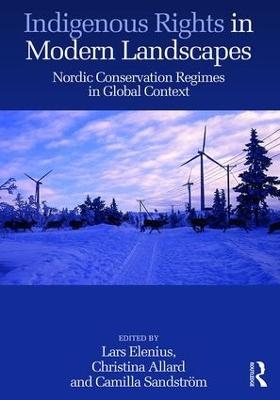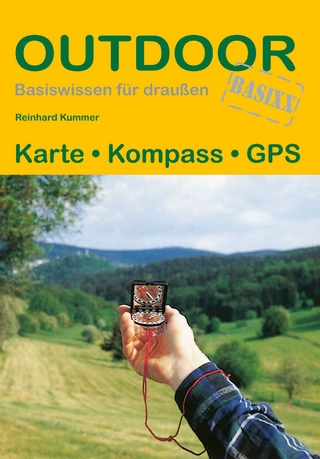
Indigenous Rights in Modern Landscapes
Routledge (Verlag)
978-1-4724-6492-7 (ISBN)
Lars Elenius (PhD) is Professor of History and Education at Umeå University and Luleå University of Technology, Sweden. His specialist areas of interest are on national minorities and Indigenous people in northern Europe. His research interests generally are on history of education, Indigenous history, historical culture, minoritypolicy, ethnopolicy, nationalism, regionalism, history of northern Europe. He has written widely on these and related topics. Christina Allard (LLD) is Associate Professor in Law at Luleå University of Technology, Sweden, and at the Faculty of Law, UiT The Arctic University of Norway. Her research interests focus on natural resources use and environmental protection with special emphasis on Indigenous people’s territorial rights as well as comparative legal aspects. She is the leader of the Nordic research network for Sámi and Indigenous people’s law, NORSIL, and has a strong publication record on legal research related to Indigenous rights. Camilla Sandström (PhD) is a Professor at the Department of Political Science, Umeå University, Sweden. She has a special interest in institutional aspects of natural resource governance and management, including how collaborative governance such as co-management and public private partnerships can be used to handle conflicts and trade-offs between different interests. She is the leader of an interdisciplinary team involved in research on sustainable rural development with a specific emphasis on natural resource management such as protected areas, forests, fish and wildlife.
Introduction (Lars Elenius) Part 1: Legislation and Historically Changed Policies within Sápmi Chapter 1. Nordic Legislation on Protected Areas: How does it affect Sami customary rights? (Christina Allard) Chapter 2. Conceptions of Ethnicity and Nature Conservation in Reindeer Herding Areas in Sweden and Finland (Lars Elenius) Chapter 3. Rights of the Naturised (Tore Anderssson) Chapter 4. Protecting Sacred Sites, Maintaining Cultural Heritage, and Sharing Power: Co-management of the SGang Gwaay UNESCO World Heritage Site in Canada (Thora Herrmann, Leena Heinämäki & Cindy Morin) Chapter 5. Land Rights as the Prerequisite for Sámi Culture: Skolt Sámi’s Changing Relation to Nature in Finland (Panu Itkonen) Chapter 6. Nature Conservation in Russia: The Case of Indigenous Sami Rights in the Kola Peninsula (Vladislava Vladimirova) Part 2: Governance of Indigenous Space in a Global Context Chapter 7. Reimagining Governance for ‘Yellowstone’ Modeled National Parks in the New Era of Indigenous Legal Recognition (Jacinta Ruru) Chapter 8. Engaging with Uncertainty: Shared Governance in Indigenous Conservation Landscapes (Michael Adams) Chapter 9. A Space for Sámi Values? Sámi Reindeer Herding and Norwegian National Parks (Jan Åge Riseth) Chapter 10. International Arenas, Local Space for Agency and National Discourse as Mediator: Protected Areas in Swedish and Norwegian Sápmi (Elsa Reimerson) Chapter 11. World Heritage Bureaucracy – How It Works and How It Affects Indigenous Peoples (Carina Green & Jan Turtinen) Chapter 12. Sami Participatory Rights in Area Protection and Management: The Influence of the Related CBD’s Programme in Finland and Norway (Antje Neumann) Chapter 13. Contrasting Nature, Contrasting Rights -Concluding Remarks (Christina Allard, Elsa Reimerson & Camilla Sandström)
| Erscheinungsdatum | 25.05.2016 |
|---|---|
| Zusatzinfo | 1 Tables, black and white; 5 Line drawings, color; 4 Halftones, color |
| Verlagsort | London |
| Sprache | englisch |
| Maße | 174 x 246 mm |
| Gewicht | 589 g |
| Themenwelt | Schulbuch / Wörterbuch ► Wörterbuch / Fremdsprachen |
| Naturwissenschaften ► Geowissenschaften ► Geografie / Kartografie | |
| Recht / Steuern ► EU / Internationales Recht | |
| Recht / Steuern ► Öffentliches Recht ► Völkerrecht | |
| Sozialwissenschaften ► Ethnologie | |
| Sozialwissenschaften ► Politik / Verwaltung | |
| Sozialwissenschaften ► Soziologie | |
| ISBN-10 | 1-4724-6492-3 / 1472464923 |
| ISBN-13 | 978-1-4724-6492-7 / 9781472464927 |
| Zustand | Neuware |
| Informationen gemäß Produktsicherheitsverordnung (GPSR) | |
| Haben Sie eine Frage zum Produkt? |
aus dem Bereich


